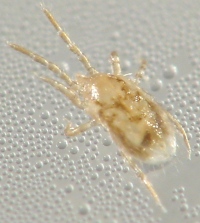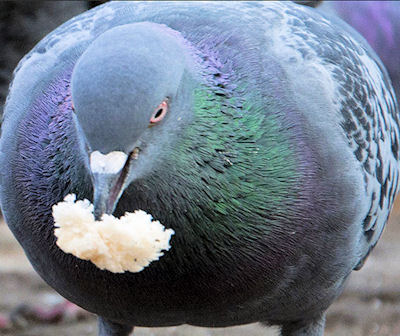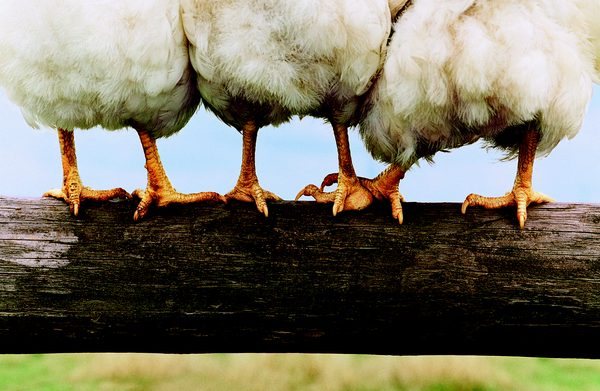What is a bird mite?
While there are several different species of bird mites, the most common species that are known to affect humans is the Ornithonyssus bursa. A common bird mite is also known as tropical fowl mite and starling mite.
The adult bird mite has a small and oval shaped body with eight legs (larval stage of bird mite has six legs), has a pale body colour and is semitransparent with a sparse covering of short hair. They can also sometimes appear in red or brown colour which depends on how recent they've had their last meal. Bird mites rely on their bird host for survival and use it as a food source.
Individual bird mites can be difficult to spot with the naked eye. To stop a bird mite infestation, we recommend that you book a professional pest control team.
Get the best pest control price in Sydney. We can match any comparable quote! Call our team on (02) 8007 4666 to get a quote!
Why are bird mites considered as pests?
Bird mites are typically associated with common bird species in Australia such as pigeons, sparrows, starlings and mynahs. Bird mites can survive as long as three months when living on a suitable host, but are unlikely to live more than a few weeks without a host.
They are highly mobile but are unable to jump or fly. Bird mites are unable to infest the skin, hair and clothing of humans. Still, they can bite people and cause a prickling feeling that is accompanied with irritation, rashes and itching. An irritation can occur because of an allergic reaction to their saliva. As a result of itching and scratching, the skin also becomes prone to various secondary infections.
Bird mites in Australia do not transfer any microorganisms known to be disease-carriers. Bird mites are pests simply because they bite humans.
Tell us your problem
FREE QUOTE
What are the health risks of having a bird mite infestation?
Skin irritation
Some mites can bite humans, and these bites usually occur around the armpits, ankles, and areas where clothing rubs tightly against the skin. The bites can result to itchy red marks or rashes.
The best way to protect yourself is by making sure there are no birds in your property. If an infestation happens, you can use insect repellents that will give you temporary protection until you can undertake better bird mite control measures.
Itching
Intense itching and scratching may lead to an infection. Symptoms of a skin problem will usually be visible within a day and may last as long as a week.
Irritation and itching caused by bird mites can be relieved with various anti-itching medications such as crotamiton. Strong allergic reactions have to be treated with antihistamines.
Meanwhile, scabies mites may cause persistent, itchy rashes. These pests burrow into the skin to breed and then emerge to feed on flesh. Bites from chiggers and scabies mites can cause more serious problem such as diseases transmitted to humans and livestock.
Allergies
People with dust allergies are usually also allergic to dust mites that live in carpets and furniture. Mite carcasses and feces can become airborne and people can inhale it. This will cause stuffy noses, watery eyes, and sneezing of individuals with dust allergies. Additionally, herbivorous mites, like eriophyid and spider mites, can damage crops.
How can you detect a bird mite infestation?
Most mites are invisible to the naked eye, so infestations can be difficult to detect until the pests grow in number and become a big problem. Usually, homeowners notice mite infestations when allergies feel worse in the morning right after waking up, or if they notice small red welts or rashes on their skin.
You may also find that your household pet excessively scratches. Sores and red bumps on your pet can be another sign that your pet has mites.
Talk to our team today to schedule a pest inspection!
How to prevent a mite infestation?
You can mow your lawn and remove weeds regularly to prevent bringing outdoor mites indoor. You can also keep leaf litter on a fair distance from your house and keep your pets clean. If you perform outdoor activities such as hiking, trail biking, or sightseeing, our advice is that you need to wear clothing that covers most of your skin.
To prevent the occurrence of mites in your home, you must conduct regular cleaning. This usually includes dusting surfaces and vacuuming carpets. Give extra attention to the bedrooms, because dust mites commonly live on or near mattresses. We recommend that you wash linens and bed sheets in hot water every two weeks, and try to keep the humidity level below 50% in the bedroom. People with particularly severe allergies to dust mites can consider purchasing antimicrobial mattresses, mattress encasements, and pillow covers.
How can I stop a bird mite infestation?
- Identify the problem and look for signs of a bird mite infestation
- Remove bird's nests to avoid bird mites
- Apply a pest control solution around your home to kill off bird mites
If you need further assistance, you may call us on (02) 8007 4666. If you're not yet ready to book, you may keep in touch with our team by signing up to our mailing list. Join now and get a FREE downloadable pest control guide.
Natural Pest Control for Bird Mite Infestations
We provide eco-friendly pest control treatments that are child & pet friendly. If you still struggle with pest issues or if you want a complete pest solution that protects your family from any harmful effects, check out our professional services below:



